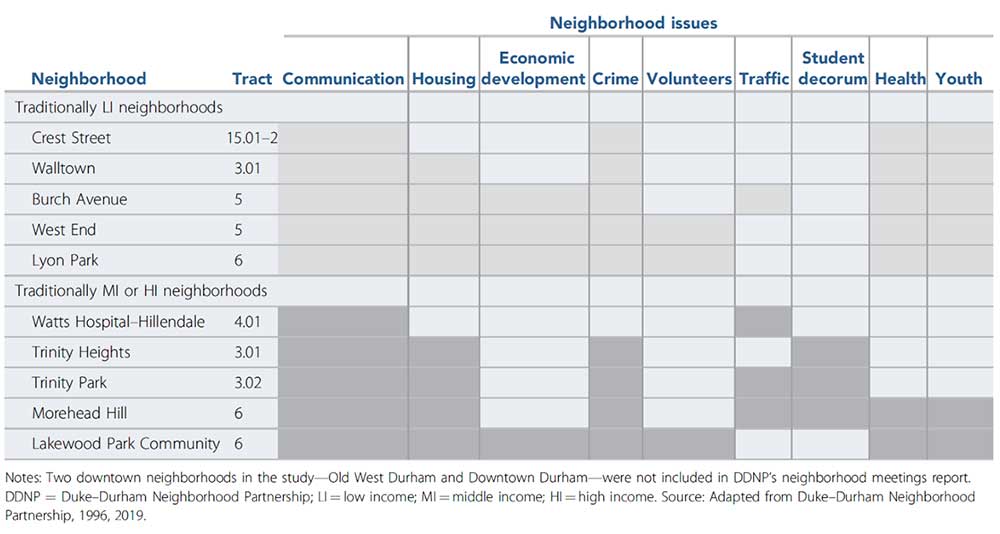Uncovering JAPA
Move Aside and Let Communities Decide

"Can You Imagine What's Happened in Durham" is the title of an article published in the Journal of the American Planning Association (Vol. 87, No. 1) by Meagan Ehlenz, AICP. However, this question also is what many residents of Durham, North Carolina, must be asking themselves.
Duke's Community Investment Success Story
After economic stagnation in the mid-1990s, Durham has found success with the support of its anchor institution Duke University. Through targeted investment in the neighborhoods that it occupies and those around it, Duke has produced more than 400 units of affordable housing. It also has committed more than $22 million in loans, deposits, and/or investments in affordable housing projects. Of course, this calls into question why Duke's strategy for community revitalization has succeeded — even improving its public perception — while so many others have failed. Ironically, this may result from the university seeking community input and not credit.
Through 25 interviews with university administrators, nonprofit partners, public servants, and Durham residents, Ehlenz discovers that the Duke administration did not center institutional benefit when deciding how to contribute, thereby forgoing a traditional top-down approach. Instead, the university hired community leaders to facilitate residents in identifying their areas of investment. This moved the university beyond tokenism toward allowing residents control over how their built environment is shaped.
Moreover, the university acknowledged that its surrounding neighborhoods are not a monolith; rather, each is affected differently by the university's presence. And of course, each has different conceptions of what the university might do to address them. A review of themes from early community meetings revealed that low-income communities prioritized health and youth. Yet, middle- and high-income communities sought out ways to address traffic and student behavior. Both identified housing and increased communication with the university as a necessity.

Table 1: Summary of neighborhood-identified priorities from DDNP community meetings (circa 1996).
Duke's Community Investment Evolution
Over the last two decades, Duke has manifested many of its surrounding communities' desires. Its changed relationship with the community exemplifies what is possible when university-community engagement models shift toward greater community control. Duke now seeks to expand its investments to Durham at large. Yet, the effects of its presence are felt at scales beyond the municipal; it has necessitated the development of more affordable housing not only in the City of Durham but throughout Durham County. And with more housing comes an additional strain on city services, e.g. public transportation, public schools, waste disposal, etc. Therefore, the question becomes how universities might acknowledge the impact they have on spaces most proximate while also supporting individuals and governments to minimize their indirect impacts.
Top image: Ryan Herron/gettyimages.com


